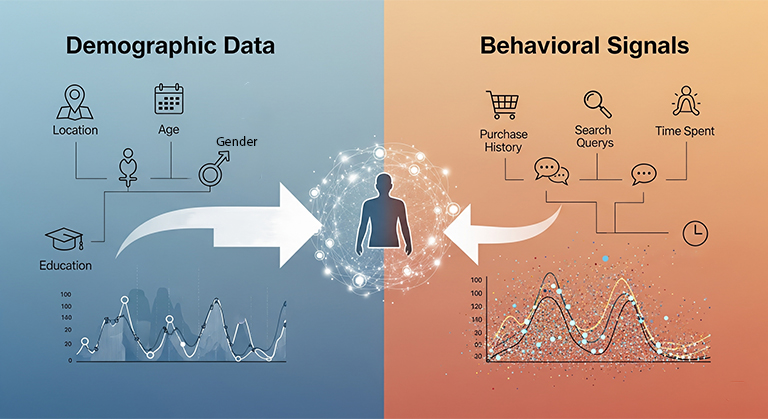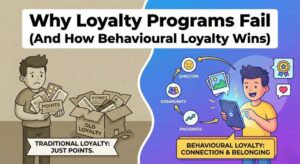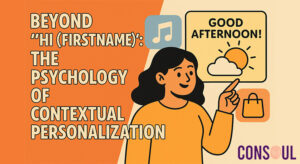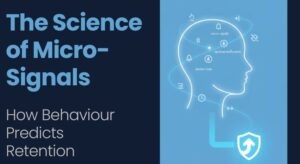Why real personalization starts with behavior, not demographics
For years, customer relationship management (CRM) strategies have centered around segmentation. Marketers grouped audiences by age, gender, income, geography — and used these static buckets to deliver campaigns. While this demographic lens was once effective, today it falls short of capturing the complexities of how customers behave in real time.
Modern consumers don’t fit neatly into predefined segments. Two customers in the same demographic bracket can exhibit radically different interests, intent, and loyalty. As digital journeys become more fragmented and non-linear, CRM teams need a new approach — one that shifts focus from broad segments to precise behavioral signals.
This blog explores why that shift is essential, how it unlocks meaningful personalization, and what CRM teams can do to start transitioning today.

The Limits of Demographic Segmentation
Demographic segmentation feels intuitive: group people by observable traits, assume similar behavior, and tailor communications accordingly. But the cracks in this model are clear:
- Similar people, different behaviors:
Two individuals in the same age group may have vastly different browsing, purchasing, and engagement patterns.
- Static data, dynamic consumers:
Demographics are static by nature — your age or gender doesn’t change quickly, but your intent, preferences, and needs evolve rapidly, often within days or even hours.
- Over-reliance leads to irrelevance:
Demographic targeting alone often results in generic messaging, missing what customers actually care about in the moment.
In a world where consumers expect tailored, timely, and contextually relevant experiences, CRM teams must recognize that demographic segments alone offer an incomplete picture.
Understanding Behavioral Signals: What CRM Teams Should Track
Real personalization starts with understanding what a customer is doing now — their behaviors, signals, and journeys.
Behavioral signals reflect intent, interest, and engagement more reliably than demographic attributes. Some key signals CRM teams should monitor include:
- Recency: When was the last interaction (visit, purchase, engagement)?
- Frequency: How often is a customer interacting with your brand?
- Purchase patterns: What categories, price points, and brands are they gravitating towards?
- Abandonment behavior: Did they browse but not buy? Add to cart but not complete checkout?
- Content consumption: What blogs, videos, or guides have they viewed recently?
- Lifecycle stages: Are they a first-time visitor, returning user, dormant customer?
The shift is about understanding customers as fluid participants in their journey, rather than fixed members of a static segment.
Examples of Behavior-Led Personalization in Action
Let’s take a few practical examples to illustrate this shift:
Abandoned Cart vs. Browse Abandonment
Traditional CRM strategies might treat all visitors aged 25-34 the same. A behavior-led approach would recognize two vastly different scenarios:
- Visitor A added products to cart but didn’t check out
- Visitor B browsed multiple categories without adding anything
Each requires a different message and timing — behavior determines relevance, not demographics.
OTT: Binge Watchers vs. Casual Browsers
In OTT platforms, two users might share demographic similarities but behave differently:
- User A consistently binge-watches full seasons
- User B samples one or two episodes sporadically
Treating them as one “segment” undermines opportunities to drive deeper engagement. Behavioral signals help tailor nudges like watchlist reminders, personalized recommendations, or upsell offers.
Why Timing Matters More Than Targeting
Behavior-led CRM doesn’t just improve relevance; it improves timing.
Traditional segmentation results in campaigns planned weeks or months in advance, often missing the customer’s moment of need. Behavioral signals allow teams to respond in real time — when intent is highest.
A few minutes can make all the difference:
- Responding instantly to a lead form submission
- Re-engaging a shopper within hours of cart abandonment
- Triggering reminders when an active subscriber shows signs of declining engagement
CRM teams that act on behavior reduce the gap between “interest” and “action,” improving conversions, retention, and customer satisfaction.
Transitioning from Segments to Signals: How to Start
This shift doesn’t require a complete overhaul overnight. CRM teams can take small, meaningful steps to evolve their approach:
- Identify your top behavioral signals:
Audit your current CRM data — what real-time behaviors can you already track (e.g., cart abandonment, last login, product views)? - Automate responses to common signals:
Start simple — automated cart recovery emails, reactivation journeys for dormant customers, or reminders for incomplete registrations. - Test timing and relevance:
Move beyond broad campaign calendars to experiment with event-triggered communications, driven by real-time behavior. - Integrate your MarTech stack:
Ensure CRM, analytics, and communication platforms are integrated to allow smooth handoff of behavioral data into campaigns.
These foundational steps build toward a system where personalization is dynamic, timely, and aligned with real-world customer journeys.
Measuring Success: What to Track
Shifting from segments to signals should translate into measurable gains. CRM teams can assess their progress by tracking:
- Conversion lift on behavior-triggered campaigns vs. broad campaigns
- Reduction in cart abandonment or churn rates
- Increases in repeat purchases, watch time, or session frequency
- Overall improvement in engagement metrics like email open and click-through rates
The goal is clear: use behavioral understanding to engage customers smarter and faster, driving higher lifetime value.
Conclusion
The era of broad segmentation is ending — not because demographic data is irrelevant, but because it’s incomplete.
In today’s landscape, personalization starts with understanding behavior: what people are doing, when, and why.
CRM teams that shift from static segments to dynamic behavioral signals gain a deeper, more precise understanding of their audiences. This unlocks timely, relevant, and effective engagement — turning potential churn into retention, and one-time buyers into loyal customers.



